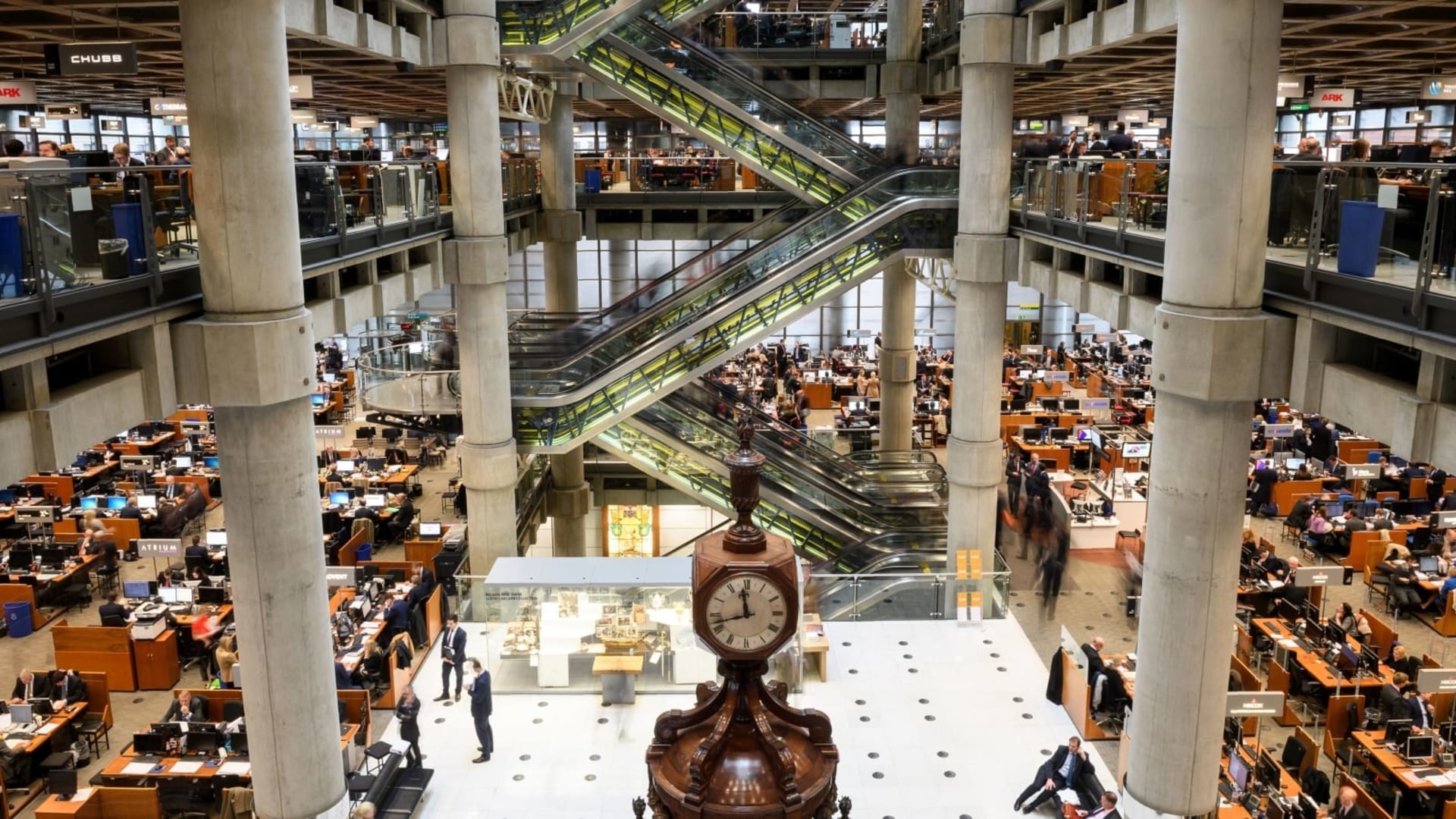What is the Lloyd’s of London?
Lloyd’s of London is an insurance market, which consists of different parties, all of which together combine to provide clients with specialized insurance coverages. In the market, the insurance companies operate as syndicates, each of which is specialized on a particular risk, and each of them choose whether if they want to insure a risk or not, and by how much. The Lloyd’s of London also allows for several syndicates to insure the same risk, thus spreading the insurance risk of various clients. The main function of the Lloyd’s of London is to act as an intermediary between the underwriters, the insurance companies, the clients, and the brokers. The market functions under the governance of the Lloyd’s act of 1871 as well as the rules and regulations set forth by the UK Parliament.
The History of Lloyd’s of London.
The organization was founded by Edward Lloyd in 1686. Initially Edward Lloyd ran a coffee house on Tower Street, in London, where different participants of the marine industry would gather. Lloyds was successful at catering them information on the news of the shipping industry. Soon, the coffee house became a popular place for purchasing and selling marine insurance. Lloyd’s coffee house was also attended by mariners, who were involved in the marine slave trade, in time this fact gave Lloyd a monopoly over the marine insurance related to the slave trade, which Lloyd held until the beginning of the 19th century. However, in June 2020, the company has issued an apology for being involved in the Atlantic Slave trade, calling it “an appalling and shameful period”.
During the 19th century, Lloyd’s also established the Lloyd’s Act (1871), which gave the business a legal foundation. Throughout the 19th and 20th century, the market grew and improved into one of the leading insurance and reinsurance providers in the globe. Their current Headquarters is located on Lime street, London, UK.
How does Lloyd’s of London function?
In essence, Lloyd’s of London functions similar to a financial market, where buyers represent clients, who are after a service (insurance coverage), and sellers represent companies (insurance companies) who can provide those services (insurance coverage). The market also includes brokers, who connect the buyers with the sellers, as well as managing agents who mainly work with the insurance companies.
Therefore, when an individual or a company wants to purchase an insurance coverage of their risk, they contact a broker, who in his turn, depending on the nature of the risk will open an insurance contract and place it in the “slip system”. Afterwards the Syndicates (insurance providers), through their Managing agents may decide to insure a percentage of the insurance risk, they may also fully insure a risk, however it is rare, as it implies a much higher risk of suffering a loss.
Members of Lloyd’s of London
Lloyd’s of London consists of 5 members, which include the syndicates, the insurance buyers, the brokers, the managing agents, and the cover holders.
Syndicates
Syndicates are comprised of members and are the insurance providers of the whole system. Syndicates are formed by members, who want to provide insurance. Each member may be either an individual with a low net worth, or a multi-billion-dollar insurance company, in terms of the system, they are considered as equal members. The amount each member receives from the syndicate is entirely dependent on the amount of financial capital, they are ready to provide for insuring risks, and the amount they receive or lose is calculated proportionally. For example, if a syndicate is insuring a risk for 5 Million USD and a member provides 4% of the insured sum, then they will receive the 4% of the profit received from that contract, and have to pay the 4% of the loss, if the syndicate reports a loss.
Insurance Buyers
Insurance buyers are individuals or companies who are looking for an insurance coverage for their risk. Often these are buyers who can not insure their risk with any other insurance provider, because of the riskiness of their coverage or their risky behavior.
Brokers
Brokers are intermediaries between the insurance buyers and syndicates, who facilitate the communication between the two parties, as well as connect the insurance buyers with their appropriate syndicates. Brokers at Lloyd’s of London must be approved by the Corporation of Lloyd’s to be allowed to do business in the marketplace.
Managing Agents
The managing agents work for the syndicates, and they are responsible for managing the daily tasks of the syndicates, as well as hiring of the essential staff, such as accountants.
Coverage Holders
Coverage holders are individuals or organizations, which the managing agents hire for the underwriting of insurance contracts. These are mainly outside organizations or individuals, who are contracted by the managing agents, when a new insurance contract is received. Coverage holders also allow Lloyd’s of London to function outside of the UK without establishing branches in other countries.
Role of the Lloyd’s of London
The Lloyd’s of London is often described as the insurance provider which will provide a coverage for almost any insurance risk. This is due to their structure of involving several insurance providers for insuring a single risk, which allows for the risk to be spread across the different providers, thus decreasing the risk for each individual insurer.
Interesting Coverages Provided by Lloyd’s
Throughout their years of experience there have been a large number of interesting insured risks. The diversity spans from celebrity body parts all the way to satellites, which are currently in orbit around the Earth.
One of the most famous cases of celebrities to be insured by Lloyd’s, was the soccer player David Beckham, who insured his legs for a coverage of £100 Million. Other notable examples were Rollings Stone’s guitarists Keith Richards’ hands for $1.6 Million, comedian Ken Dodd’s teeth for £4 Million, and one of the most interesting cases was the Australian cricketer Merv Hughes, who insured his moustache for an impressive £200,000.
There have also been a number of interesting and groundbreaking insured risks, such as the first ever satellite to be insured prior to being sent into orbit for £100 Million, which was insured in 1965. The coverage of which also paid for a salvage mission for recovery of 2 satellites, which were recovered via a space shuttle and 5 astronauts.
Other very interesting cases were the insurance of the first ever airplanes, in the beginning of the 20th century, the first of which was issued in 1911, however after a year, following a number of crashes they stopped insuring airplanes, however they continued it as the industry grew.
As far as insurance of motor vehicles, Lloyd’s insured its first motor vehicle in 1904, and back then they did not have a term for cars, therefore cars were referred to as “ships navigating on land”.
Another notable coverage was for Titanic, which was covered by Lloyd’s for £1 Million, all of which Lloyd’s paid in full after the sinking of the luxurious liner on its maiden voyage. The Titanic was insured by several insurance providers, as it was considered as a prestigious insurance contract.
Financial Figures (2019)
| Gross written Premiums from Insurance (£m) | 24,400 |
| Gross written Premiums from Reinsurance (£m) | 11,505 |
| Gross written Premiums (£m) | 35,905 |
| Total Claims paid during this year (£m) | 22,991 |
| Combined Ratio (%)* | 102.1 |
*The combined ratio is used for measurement of the performance and the financial health of an insurance company; it measures whether if the company is earning more from its received premiums than it spends on its expenses and losses. For example, a combined ratio of 100% means that the company is getting exactly the same amount of money from its premiums, as it uses in its expenses and losses. Anything below 100% means that the company is earning more from its premiums than it spends on its expenses and losses. It is important to take into consideration that this ratio does not consider the investments and other income of the company, therefore a company can have a combined ratio of over 100% and still be profitable.

